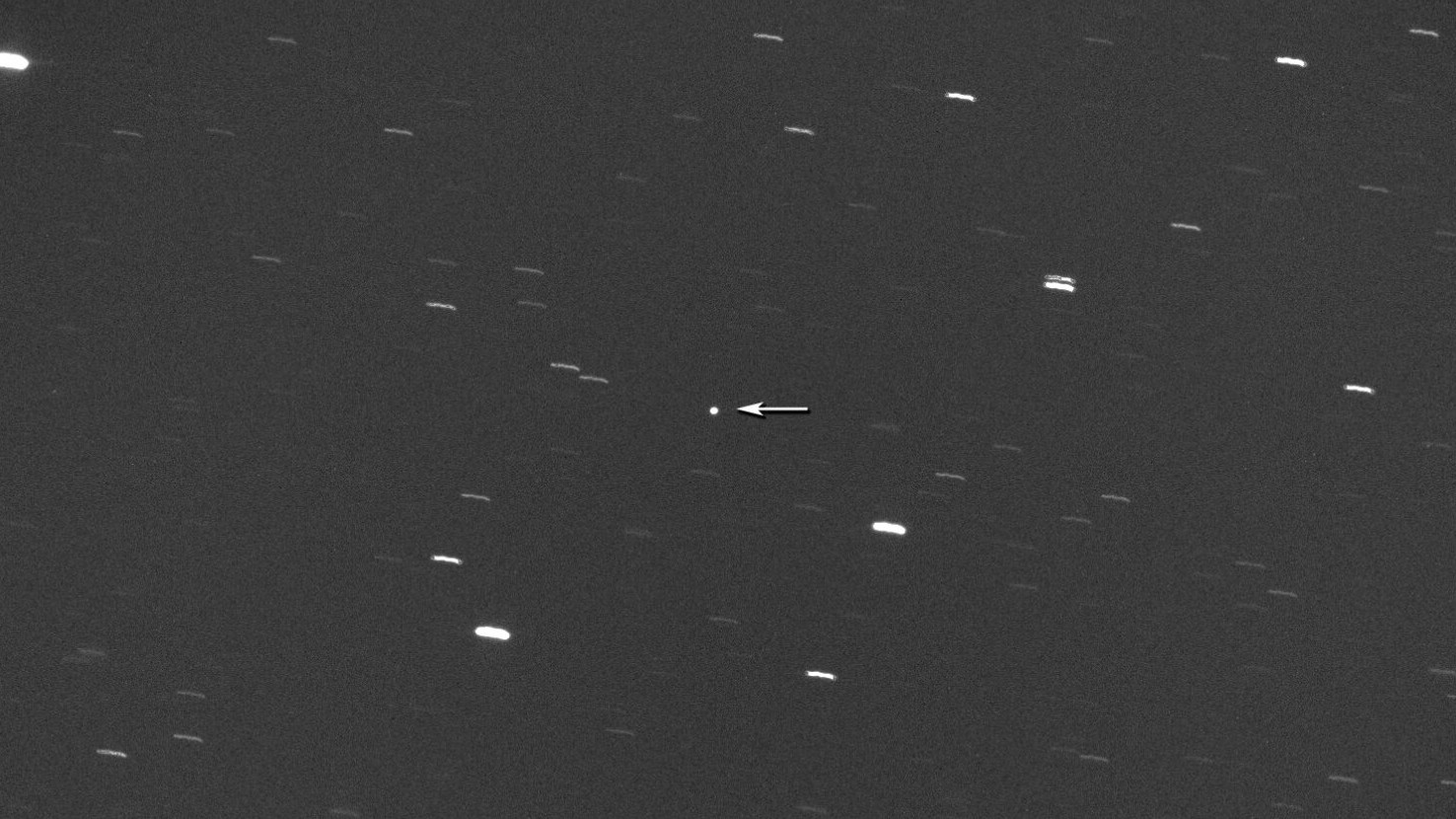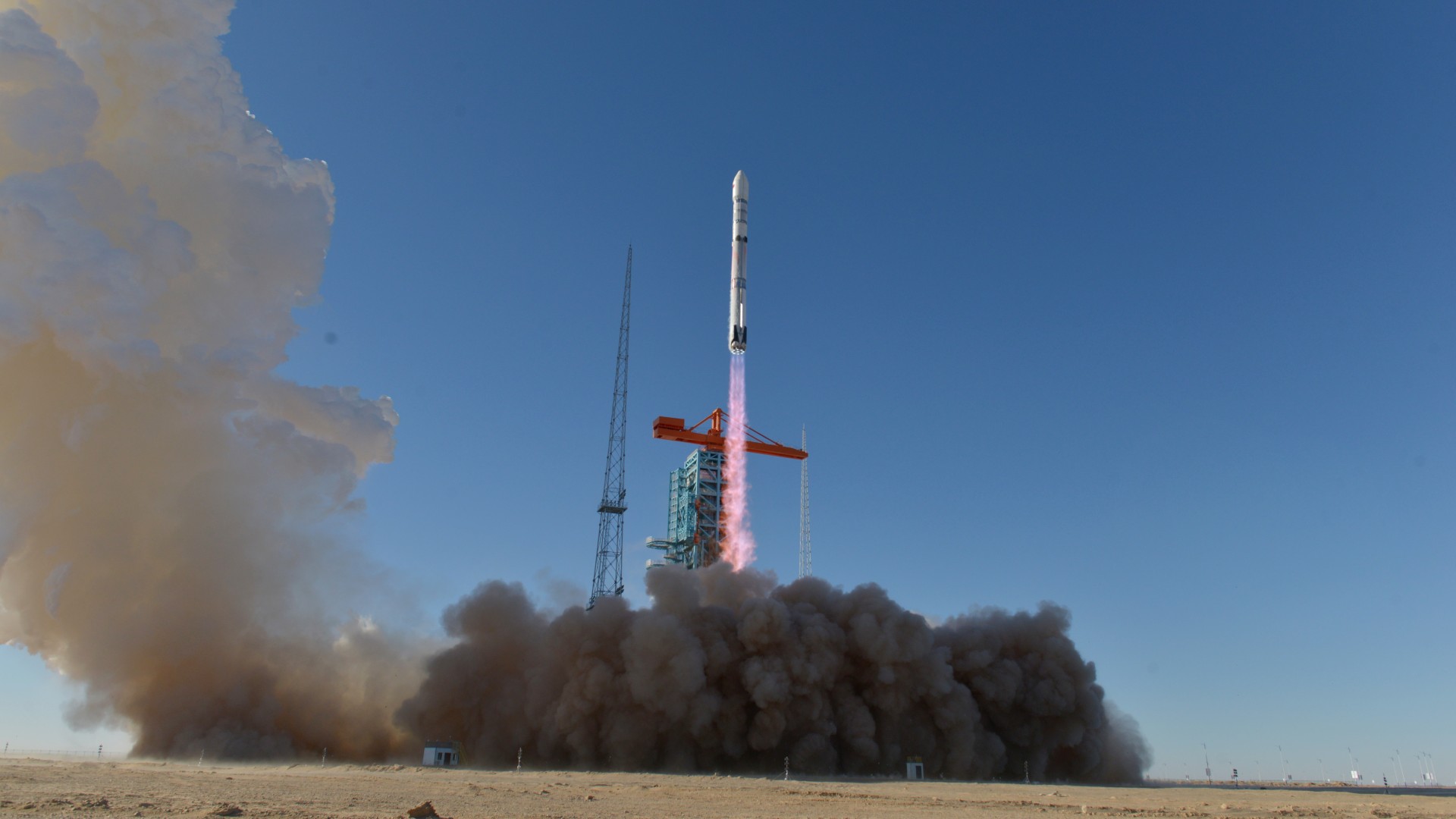Watch an asteroid the size of an aircraft carrier make a close pass of Earth on June 5
The asteroid will pose zero threat to the moon and Earth.

A potentially hazardous asteroid roughly the size of an aircraft carrier is due to pass within 2.8 million miles (3.5 million km) of Earth on June 5 and you can watch it happen live online.
NASA and its partners have been tracking the potentially hazardous asteroid 2008 DG5 ever since its discovery in (you guessed it) 2008 by the Catalina Sky Survey. The Center for Near Earth Object Studies (CNEOS) estimates it to have a diameter ranging between 1,049-2,296 ft (320-700 meters) - roughly the equivalent of the length of a Gerald R. Ford-class aircraft carrier.
The asteroid will make its closest approach to Earth at 7.59 p.m. ET (2359 GMT) on June 5, at which time it will pass 2,170,309 miles (3,492,787 kilometers) from our planet, over nine times the Earth-moon average orbital distance. At this range 2008 DG5 will be visible as a solitary point of light to powerful Earthbound telescopes.
How to watch 2008 DG5 make a close approach to Earth in real-time
The Virtual Telescope Project will host a livestream of the flyby starting at 6 p.m. ET (2200 GMT) on June 5, featuring real-time views of 2008 DG5 captured by its suite of robotic telescopes.

June 3 saw the project release an image of the asteroid captured from a distance of 2.2 million miles (3.6 million km) using the 17-inch PlaneWave telescope located in Manciano, Italy, as the asteroid cruised closer to Earth. 2008 DG5 can be picked out as a bright speck of light, with short star lines acting as a tell-tale sign of its movement against the static starfield beyond, created as the telescope tracked its position over a 120-second exposure.
NASA classifies an asteroid as potentially hazardous based on a number of factors including its size and whether it will pass within 0.05 astronomical units of Earth - the equivalent of around 4,650,000 miles (7,480,000 km), according to the agency's Jet Propulsion Laboratory.
Over 1,784 PHAs are being actively tracked by the CNEOS, none of which are predicted to strike Earth and cause widespread damage in the coming century.
Breaking space news, the latest updates on rocket launches, skywatching events and more!

Anthony Wood joined Space.com in April 2025 after contributing articles to outlets including IGN, New Atlas and Gizmodo. He has a passion for the night sky, science, Hideo Kojima, and human space exploration, and can’t wait for the day when astronauts once again set foot on the moon.
You must confirm your public display name before commenting
Please logout and then login again, you will then be prompted to enter your display name.
